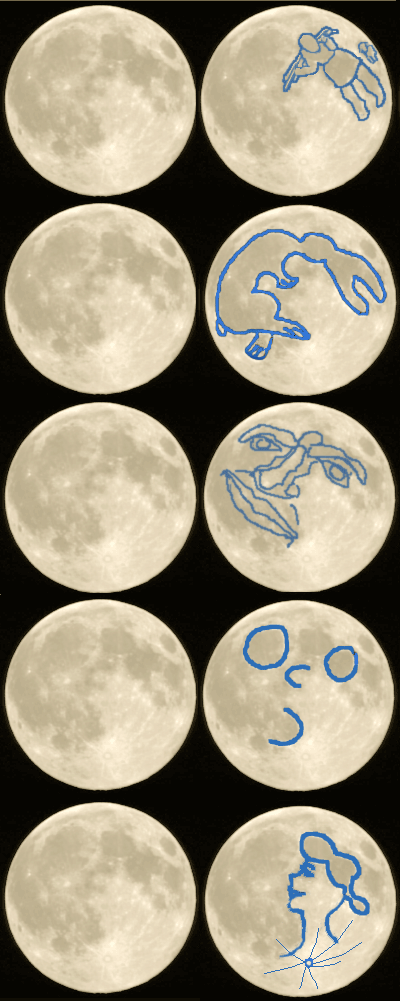We love seeing things in other things: rocks, houses, plugs, all become faces. In the sky, the constellations linked myths and legends with distant and often unrelated stars. A particular example of celestial pareidolia – the perception of a pattern in a random arrangement of stuff – is what in Western countries is referred to as the Man in the Moon. However, not everyone sees the same thing.
The rest of this article is behind a paywall. Please sign in or subscribe to access the full content.
In the cover image of this article, the Moon is low on the horizon and, aided by haze and thin clouds, we can see details that remind us of a face. There are eyes, the bright bridge of a nose ending in darker nostrils, and a mouth slightly off center. This “human face” on the Moon was crystallized in popular culture in Le Voyage dans la Lune (A Trip to the Moon), a 1902 science fiction film. The face gets a rocket right in its eye, a now iconic image.
The face itself has been linked to deities and religious figures. Some Jewish lore considers it an engraving of Jacob, one of the patriarchs of the Abrahamic religions. Dante uses a medieval Christian idea that it is Cain, cursed to forever circle the Earth, mentioning the idea twice in the Divine Comedy. For the Norse, the face is Máni himself, the personification of the Moon, running away from the Great Wolf Hati.
The face interpretation, while popular, is not the only pareidolic example. In Chinese Mythology, the goddess Chang’e is stranded on the Moon, and she is accompanied by Yu Tu, a Moon Rabbit. The rabbit theme is found in several Asian cultures. Many traditions, from distant parts of the world, also link wood cutters, trees, poles, and a human figure to the Man in the Moon.

Yes, lots of possible shapes… that’s how pareidolia works.
One in particular is from Latvia. The story from the Baltic country focuses on two maidens coming out naked from a sauna to the well, carrying poles in hand. As they collected water, one of them remarked about the beauty of the Moon. The other said her bottom was more beautiful and proceeded to moon the Moon. A moon deity, enraged by such a display, punished the woman by placing her and the pole on the Moon with her bottom out, for everyone to see. I am not sure how this woman would feel, but I think she definitely had the moral victory there.
Is the “Man in the Moon” a real phenomenon?
What we are actually seeing is the dark maria, the seas of the Moon. They are not really seas but basalt planes, from lava covering old craters. The lighter regions of the Moon are known as highlands or terrae. They are also volcanic rocks, and formed earlier than the maria from when the Moon was covered in a global magma ocean. They also have a different composition, which produces the color disparity.
Source Link: What Exactly Is The “Man In The Moon”?